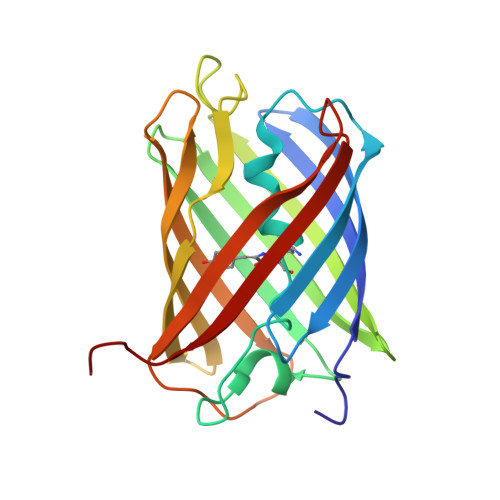The 2.2 a crystal structure of a pocilloporin pigment reveals a nonplanar chromophore conformation.
Prescott, M., Ling, M., Beddoe, T., Oakley, A.J., Dove, S., Hoegh-Guldberg, O., Devenish, R.J., Rossjohn, J.(2003) Structure 11: 275-284
- PubMed: 12623015
- DOI: https://doi.org/10.1016/s0969-2126(03)00028-5
- Primary Citation of Related Structures:
1MOU, 1MOV - PubMed Abstract:
Reef-building corals contain host pigments, termed pocilloporins, that function to regulate the light environment of their resident microalgae by acting as a photoprotectant in excessive sunlight. We have determined the crystal structure of an intensely blue, nonfluorescent pocilloporin to 2.2 A resolution and a genetically engineered fluorescent variant to 2.4 A resolution. The pocilloporin chromophore structure adopts a markedly different conformation in comparison with the DsRed chromophore, despite the chromophore sequences (Gln-Tyr-Gly) being identical; the tyrosine ring of the pocilloporin chromophore is noncoplanar and in the trans configuration. Furthermore, the fluorescent variant adopted a noncoplanar chromophore conformation. The data presented here demonstrates that the conformation of the chromophore is highly dependent on its immediate environment.
Organizational Affiliation:
Department of Biochemistry and Molecular Biology, School of Biomedical Sciences, Monash University, Clayton, 3800, Victoria, Australia. mark.prescott@med.monash.au
















